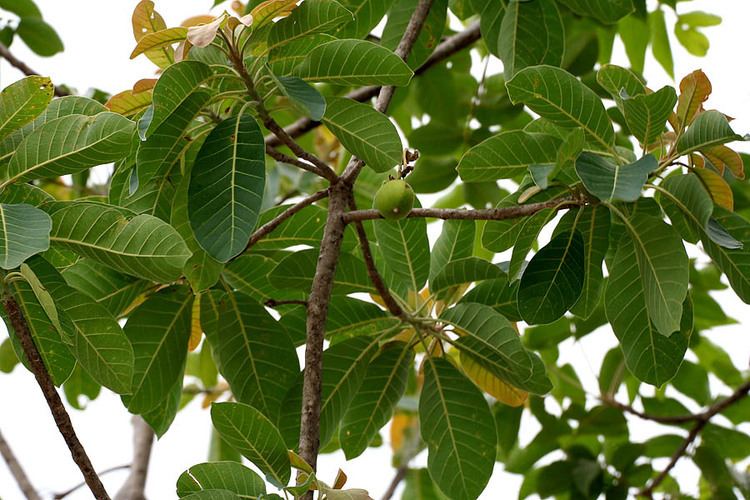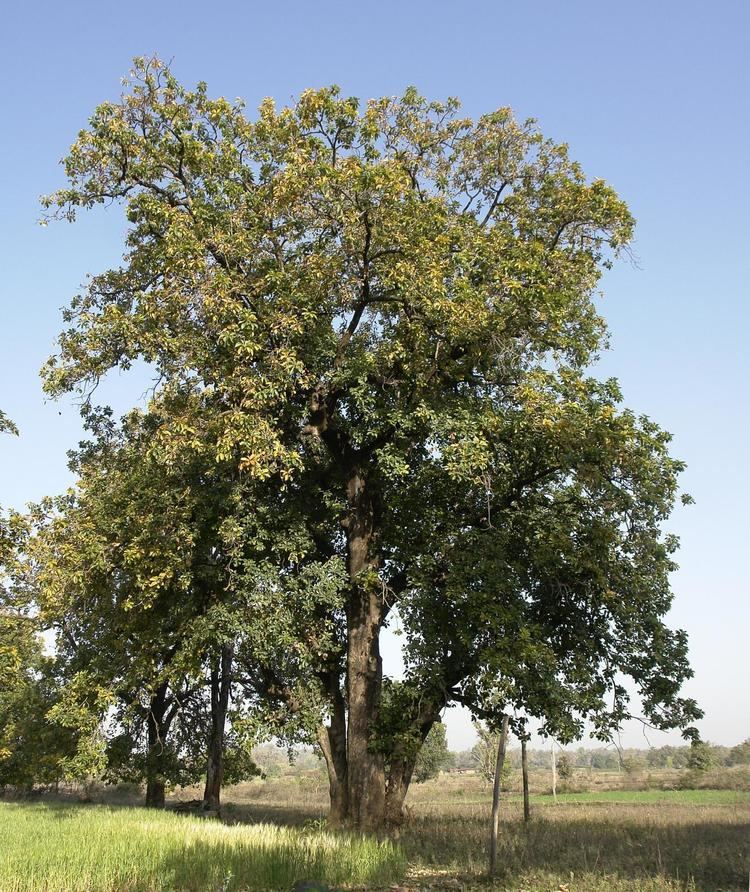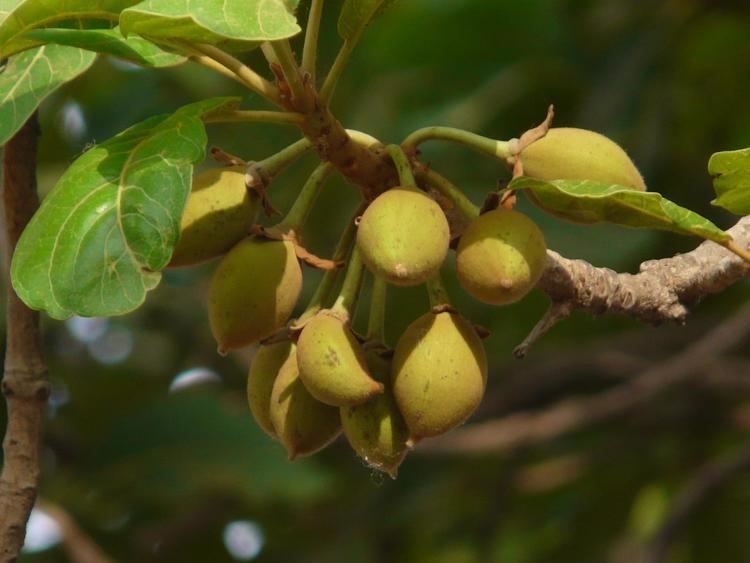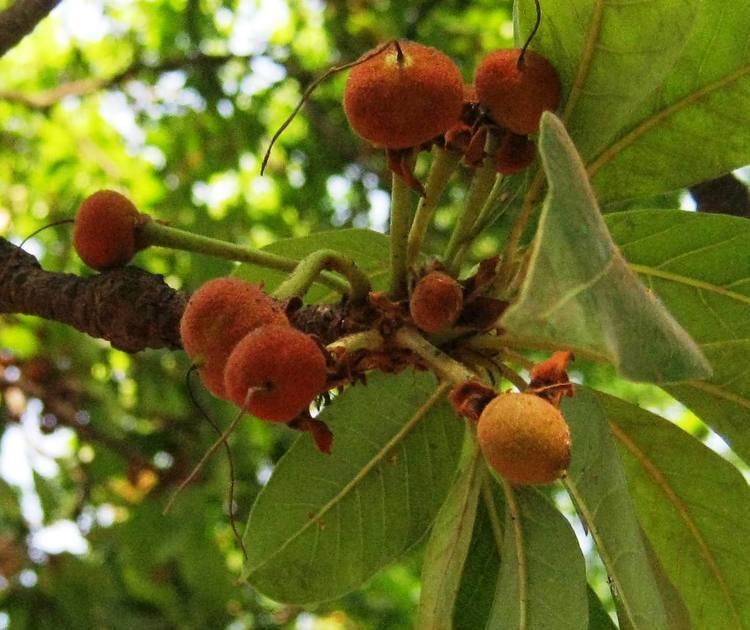Rank Species | Genus Madhuca Higher classification Madhuca | |
 | ||
Similar Madhuca, Pongame oiltree, Diospyros melanoxylon, Sapotaceae, Sacred Tree | ||
Madhuca longifolia sri lanka
Madhuca longifolia is an Indian tropical tree found largely in the central and north Indian plains and forests. It is commonly known as mahua, mahwa or Iluppai. It is a fast-growing tree that grows to approximately 20 meters in height, possesses evergreen or semi-evergreen foliage, and belongs to the family Sapotaceae. It is adapted to arid environments, being a prominent tree in tropical mixed deciduous forests in India in the states of West Bengal, Chhattisgarh, Jharkhand, Uttar Pradesh, Bihar, Maharashtra, Telangana, Madhya Pradesh, Kerala, Gujarat, Orissa and Tamil Nadu.
Contents

Uses
It is cultivated in warm and humid regions for its oleaginous seeds (producing between 20 and 200 kg of seeds annually per tree, depending on maturity), flowers and wood. The fat (solid at ambient temperature) is used for the care of the skin, to manufacture soap or detergents, and as a vegetable butter. It can also be used as a fuel oil. The seed cakes obtained after extraction of oil constitute very good fertilizer. The flowers are used to produce an alcoholic drink in tropical India. This drink is also known to affect the animals. Several parts of the tree, including the bark, are used for their medicinal properties. It is considered holy by many tribal communities because of its usefulness.

The tree is considered a boon by the tribals who are forest dwellers and keenly conserve this tree. However, conservation of this tree has been marginalized, as it is not favoured by nontribals.

The leaves of Madhuca indica (= M. longifolia) are fed on by the moth Antheraea paphia, which produces tassar silk, a form of wild silk of commercial importance in India.

The Tamils have several uses for M. longifolia (iluppai in Tamil). The saying "aalai illaa oorukku iluppaip poo charkkarai" indicates when there is no cane sugar available, the flower of M. longifolia can be used, as it is very sweet. However, Tamil tradition cautions that excessive use of this flower will result in imbalance of thinking and may even lead to lunacy.
The alkaloids in the press cake of Madhuca seeds is reportedly used in killing fishes in aquaculture ponds in some parts of India. The cake serves to fertilize the pond, which can be drained, sun dried, refilled with water and restocked with fish fingerlings.
Mahuwa flowers
The mahuwa flower is edible and is a food item for tribals. They are used to make syrup for medicinal purposes.
They are also fermented to produce the alcoholic drink mahuwa, a country liquor. Tribals of Bastar in Chhattisgarh and peoples of Orissa, Santhals of Santhal Paraganas (Jharkhand), Koya tribals of North-East Andhra Pradesh (vippa saara: విప్ప సారా) and tribals of North Maharashtra consider the tree and the mahuwa drink as part of their cultural heritage. Mahuwa is an essential drink for tribal men and women during celebrations. The main ingredients used for making it are chhowa gud (granular molasses) and dried mahuwa flowers.
The liquor produced from the flowers is largely colourless, with a whitish tinge and not very strong. The taste is reminiscent of sake with a distinctive smell of mahua flowers. It is inexpensive and the production is largely done in home stills.
Mahua flowers are also used to manufacture jam, which is being made by tribal cooperatives in the Gadchiroli district of Maharashtra.
In many parts of Bihar, such as villages in the district of Siwan, the flowers of mahua tree are sun-dried; these sun-dried flowers are ground to flour and used to make various kinds of breads.
Oil
Trifed, a web site of the Ministry of Tribal Affairs, Government of India reports: "Mahuwa oil has emollient properties and is used in skin disease, rheumatism and headache. It is also a laxative and considered useful in habitual constipation, piles and haemorrhoids and as an emetic. Tribals also used it as an illuminant and hair fixer."
It has also been used as biodiesel.
